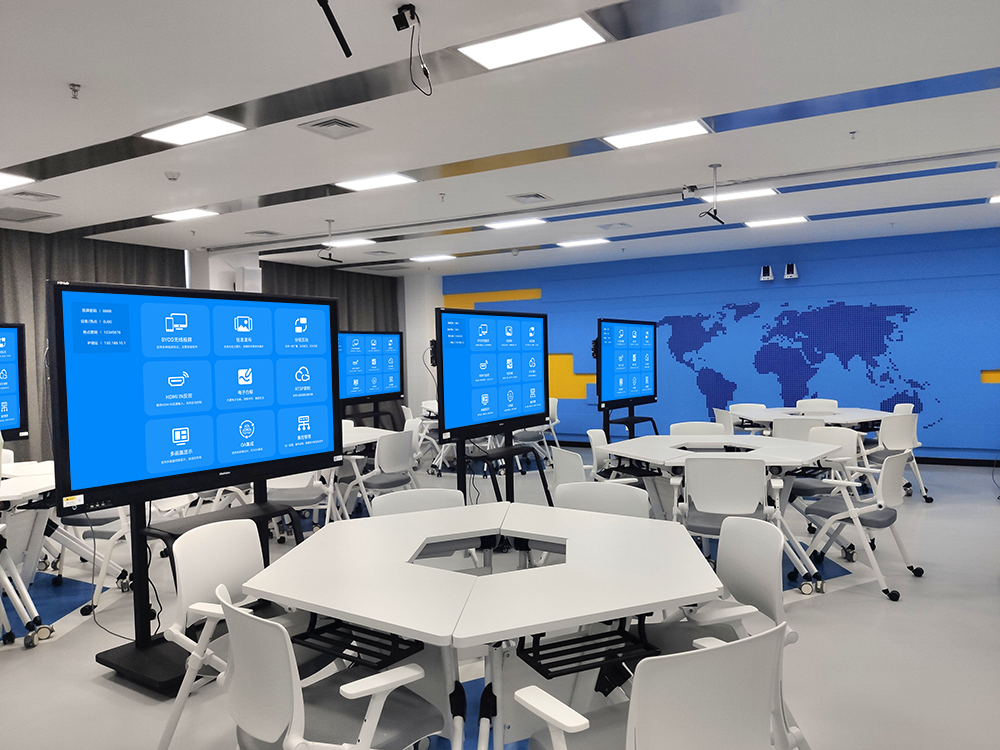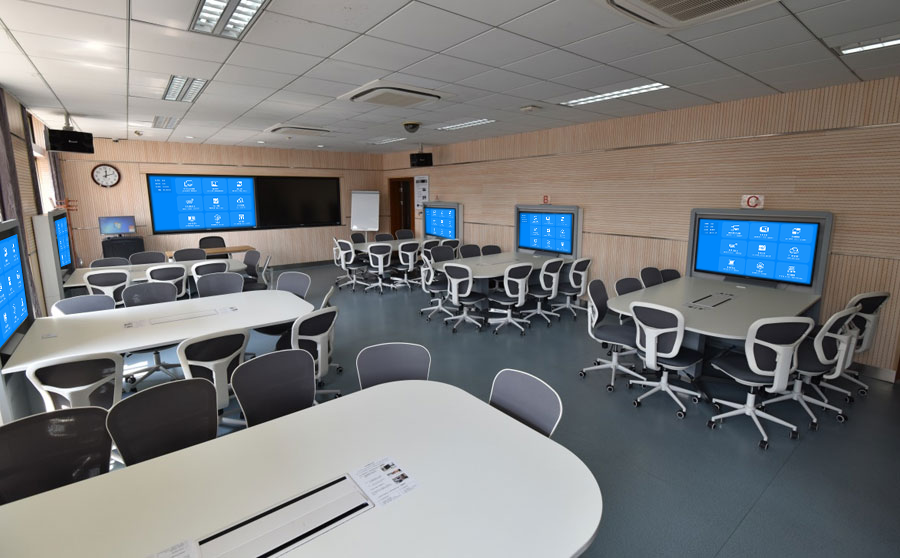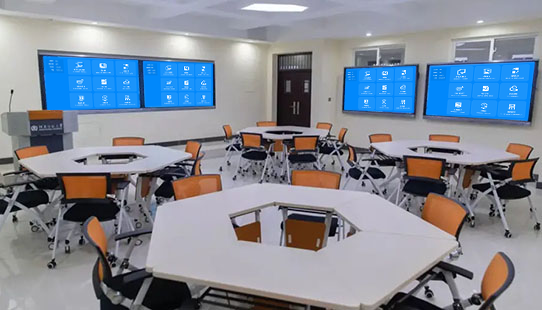Multi-Screen Interaction: Unleashing Greater Efficiency Through Device Collaboration
Multi-screen interaction technology is breaking down the physical barriers between phones, computers, tablets, and large displays. By enabling free content flow and bidirectional operational linkage, it transforms the function of a single device into the collaborative power of multiple terminals, reshaping the logic of collaboration in office, education, and entertainment.
I. Full-Link Device Interconnection: Building a Borderless Collaboration Network
(I) Cross-System Multi-Device Concurrency
It supports iOS, Android, Windows, and macOS devices being online simultaneously, with a single system stably connecting up to 16 devices. Client requirements from a phone, proposal frameworks from a computer, and design sketches from a tablet can all be presented simultaneously in a split-screen view on the main display. In a corporate strategy meeting, the CEO can mirror core objectives from their computer, the Marketing Director can push competitor data from their phone, and the Product Manager can annotate feature priorities on their tablet. Real-time linkage of multi-screen content provides decision-making information at a glance.
(II) Dynamic Role Switching Mechanism
Devices can switch between “sender” and “receiver” roles at any time. The main screen can receive videos from a phone and also push documents to a tablet. A group screen can display charts from a computer and also push annotated results back to the main screen. In a 60-person classroom, after the teacher’s main screen distributes preview materials, groups can discuss on tablets. Their resulting mind maps can be “pinned” to the main screen with one click for whole-class comparison. The main screen can then push common problem analyses to group screens, demonstrating flexible device role switching based on the scenario.
II. Upgraded Interactive Features: From Content Delivery to Co-creation and Co-existence
(I) Cross-Screen Control and Real-Time Annotation
The large screen can directly control connected devices. In a meeting, use the main screen’s touch interface to flip through PPT slides on a computer or annotate key clauses in a contract on a phone. During teaching, the teacher can modify student essays submitted from tablets directly on the classroom’s large screen, with changes synchronizing back to the student’s device. It supports 8 people annotating simultaneously with different colors. In a design review, the client can circle logo proportions in red, the designer can annotate adjustment ideas in blue, and the engineer can add process limitations in green. Multi-perspective opinions collide on the same interface in real-time, improving solution iteration efficiency by 70%.
(II) Content Drag-and-Drop and Intelligent Integration
It enables seamless file “drag-and-drop” across devices. Photos from a phone’s album can be directly dragged into a computer report, and Excel spreadsheets from a computer can be dragged to a tablet for handwritten analysis. When planning an event, a copywriter can collect materials on a phone and drag them to a computer for layout. A data analyst can drag charts to a tablet, combine them with handwritten annotations to generate visualized conclusions, and then mirror them to the main screen for reporting, shortening content integration time by 60%. The system can also automatically identify similar files, consolidating scattered client feedback into comparative tables, reducing manual organization costs.
III. Scenario-Based Collaboration Solutions: Making Efficiency Tangible
(I) Office Collaboration Scenarios
- Brainstorming: Members can push ideas in real-time from their respective devices. The main screen automatically summarizes them into a mind map, supporting drag-and-drop reorganization of the logical framework. This can produce 3 times more solutions in 1 hour than traditional meetings.
- Remote Consultation: A remote employee’s computer can mirror to the company’s main screen, while their phone acts as a microphone for real-time speaking. Annotation changes made on the main screen synchronize back to their device, making remote collaboration feel like in-person work.
(II) Teaching Interaction Scenarios
- Group Discussion: Students can film experiment steps with tablets, mirror them to group screens to annotate key points. The teacher’s main screen can randomly pull up different group displays for review, improving experimental operation standardization by 50%.
- Differentiated Instruction: The main screen can push differentiated tasks to different groups (e.g., basic group practices formulas, advanced group works on applications). After each group completes their tasks, results are displayed in a split-screen on the main screen. The teacher provides targeted explanations, boosting classroom efficiency by 40%.
(III) Home Entertainment Scenarios
- Parent-Child Interaction: Parents can select animated movies on their phones, while children draw character stickers on tablets. The large screen simultaneously synthesizes an “interactive animation,” transforming movie watching from passive reception into a fun, family co-creation activity.
- Multi-Player Gaming: Phones act as game controllers for a large-screen game, while tablets display teammates’ strategies in real-time. Multi-screen linkage upgrades single-player games to team competitions, doubling entertainment engagement.
The core value of multi-screen interaction lies in transforming devices from “isolated tools” into “collaborative nodes.” When the portability of a phone, the professionalism of a computer, the interactivity of a tablet, and the display power of a large screen combine, every operation can trigger a collaborative response across multiple terminals, ultimately achieving an efficiency breakthrough where 1+1>2.